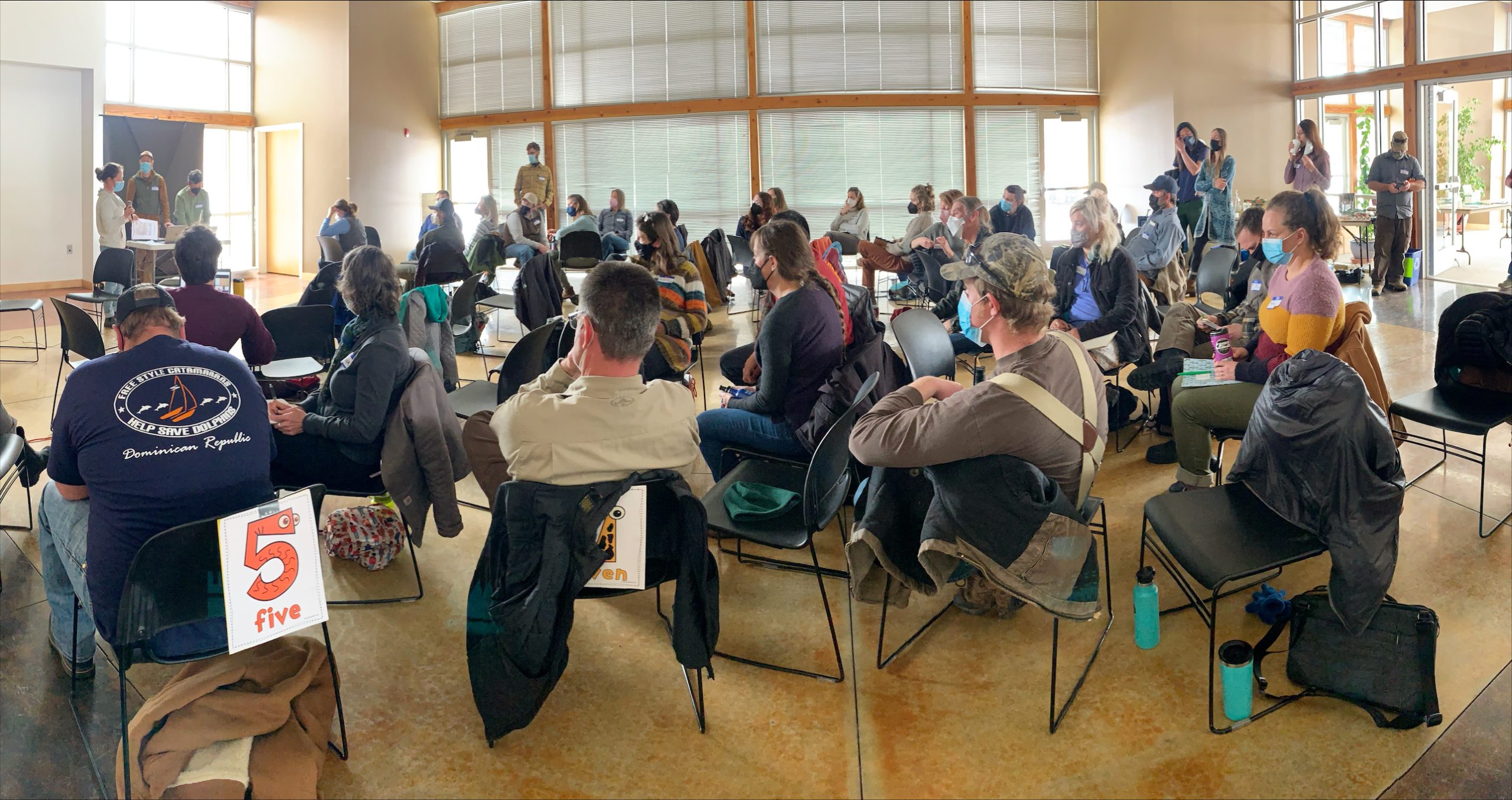Some information may be outdated.
As climate change affects the way ecosystems function and makes historical data less predictive of the future, how can land managers adapt their strategies? The Canyon Country Working Group, a collaboration of scientists and organizations doing research in Southeast Utah, put on a conference in Moab on Feb. 23 to address this question. The theme was “RAD-ical Restoration: Learning from Successes & Failures,” and the conference included presentations on restoration and how it relates to recreation, pinyon-juniper woodlands, energy development, and grazing.
Resist, accept, direct—or “RAD”—is a framework designed by the National Park Service and its partners to approach conservation and stewardship.
“As climate change interacts with other stressors such as land use change, pollution, and nonnative species, ecosystems are changing beyond the bounds of historical variability,” explains an NPS website on the concept.
As those stressors become more difficult for landscapes and land managers to combat, the RAD framework serves as a decision-making tool. Should managers resist the forces impacting an ecosystem or landscape, aiming to maintain or restore historical conditions? Or accept that a system is transforming in response to stressors, and allow it to change? Or, is there a way land managers and conservationists can direct or shape the way an ecosystem changes in response to stressors?
The idea for the conference grew out of conversations among research scientists and land managers in Moab, said Nichole Barger, professor of Ecology and Evolutionary Biology at the University of Colorado and one of the organizers of the conference. Local scientists who helped to organize the conference include Erika Geiger, Becky Mann, Michala Phillips, Kristina Young.
“This region is a hotspot for people working at the interface of science and public land management, with many people employed in the environmental management and research sectors,” Barger explained. At the same time, restoration efforts can seem particularly overwhelming in the arid local climate. When land managers have limited resources or access to the most current science, restoration seems even more daunting.
“This meeting is meant to help bridge that gap, spark conversations, and develop working relationships among environmental professionals,” Barger said, though the free conference was also open to members of the general public.
The 2022 event was the second conference arranged by the Canyon Country Working Group. The first was in 2019; concerns about the coronavirus put the event on hold for the next two years. About 50 people attended on Feb. 23, in spite of the heavy snow that morning.
“I was impressed by how many people came out for the event,” Barger said.
Barger said the most popular part of the conference was breaking into small groups for discussion. “It gave an opportunity for a lot of networking,” Barger said. “This was especially important since it has been nearly two years since people have been able to meet in person.”
The working group hopes to continue to put on a similar conference annually in the future.
“Restoration is not an easy endeavor,” Barger said, “especially in our arid climate where inconsistent precipitation and drought are constant battles, as well as weeds, low soil fertility, and ongoing disturbances such as recreation, energy development, grazing, and fire. By coming together, we can learn from each other’s experiences, expand our knowledge base, and hone in on regionally appropriate restoration approaches and toolsets.”
Appreciate the coverage? Help keep local news alive.
Chip in to support the Moab Sun News.





